Goat and Sheep services offered
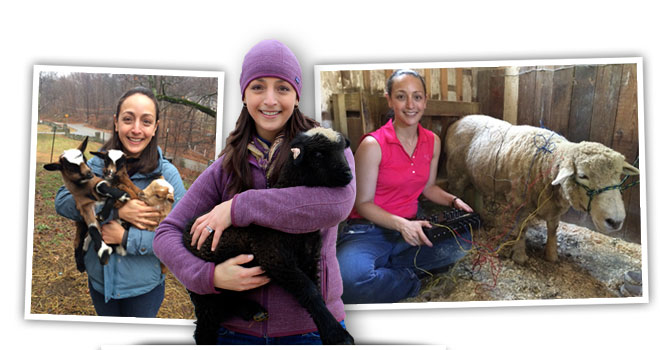
- Vaccinations: CDT and rabies
- Strategic deworming for intestinal and lung worms, liver flukes
- Hoof trimming
- Infectious disease testing: Caseous Lymphadenitis (CL) & Caprine Arthritis Encephalitis (CAE)
- Reproductive health
- Neonatal care
- Dehorning and neutering kids
- Medicine: diagnosis and treatment of digestive/nutritional disorders, respiratory disease, skin disorders, lameness, anemia, etc.
- Mineral/Vitamin injections and nutritional counseling
- Euthanasia
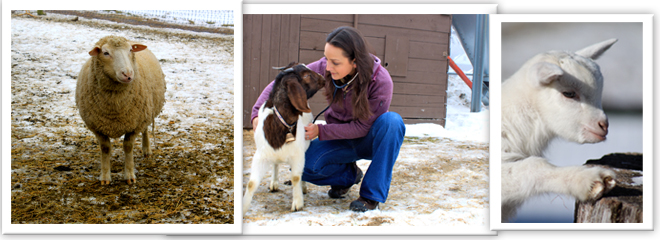
Goat Vital Signs
- Temperature: 101.7 to 104.5 degrees
- Pulse: 70-145 beat per minute
- Respiratory rate: 12-15 breaths per minute
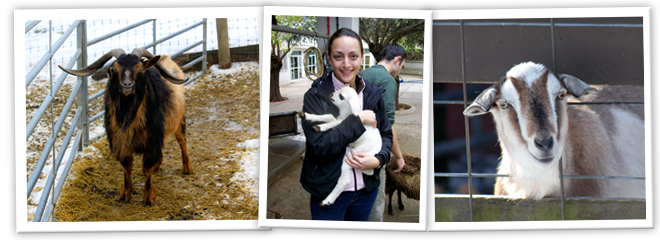
Goat Trivia
- Goats are ruminants like cows and sheep—they have 4 compartments to their stomach
- There are over 200 species of goats worldwid
- Goats range in size from about 25 lbs (pygmy goats) to upwards of 300 lbs (some breeds of meat goats)
- The average goat’s lifespan is 8-12 although some can live up to 15 year
- A goat’s age can be determined based on the configuration and wear patterns on its teeth
- Most goats live in herds of 5-20 members
- Goats are browsers and have evolved to live in varied climates includes mountains, grasslands, and deserts
- An un-neutered male goat is called a buck and a female goat is called a doe
- Baby goats are called “kids” and the act of giving birth is called “kidding
- A neutered male goat is called a “wether”
- There are 6 kinds of dairy goats in the US (Alpine, La Mancha, Oberhasli, Nubian, Saanen and Toggenberg)
- Goat milk is more easily digestible than cow milk because it is naturally homogenized. Goat milk is lower in cholesterol and higher in calcium, phosphorus and vitamin A than cow milk making it better-tolerated by people who cannot drink cow milk.
- Domestic goats have cloven hooves, a long beard, a short and upward-turned tail and horns that grow upward from the head instead of twisting to the sides like those of sheep. Both males and females have horns and beards.
- Male goats reach sexual maturity as early four months. Females are generally sexually mature by 7 months although it advisable to wait until the doe has reached 60-75% of her body weight before breeding.
- A goat’s gestation is approximately 150 days (5 months)
- Goats are seasonal breeders (they breed from late-August to early-January)
- Goats deliver anywhere between 1 and 4 kids—twinning is very common
- Goats have unique rectangular pupils and excellent night vision
- Goats have no upper teeth in front—instead they have a gum pad
Sheep vital signs:
- Temperature: 102-103 degrees
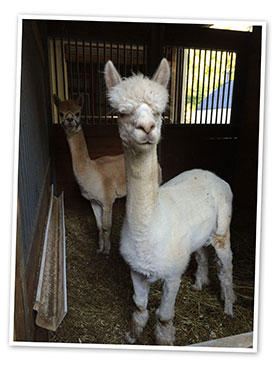
- Pulse: 60-90 beats/minute
- Respiratory rate: 12-20 breaths/minute
Alpaca/llama vital signs:
- Temperature: 100.5-102.5 degrees
- Pulse: 70-130 beats/minute
- Respiratory rate: 6-18 breaths/minute







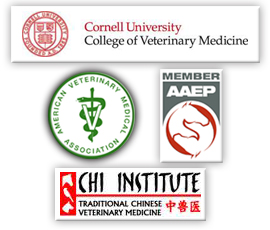 E-mail:
E-mail: